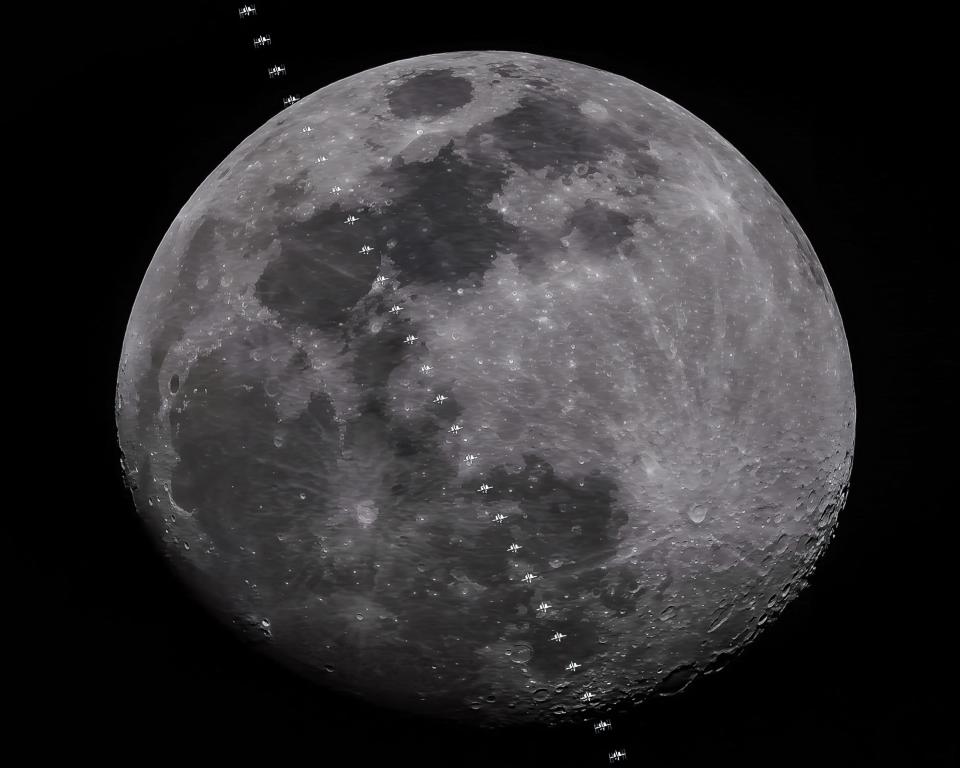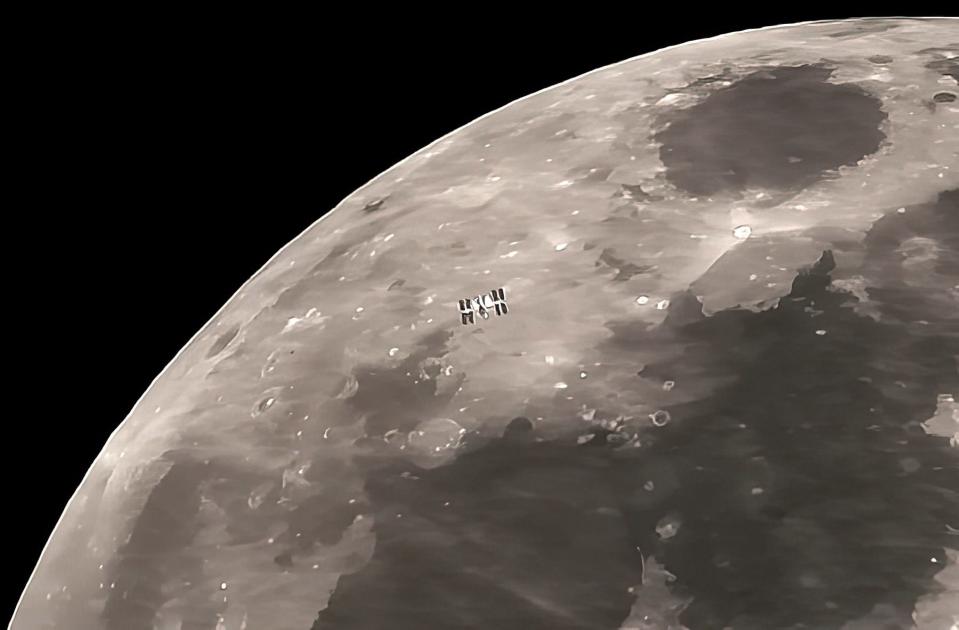Backyard Universe: Space Station draws looks worldwide. Here's how you can see it.
I’ve been an International Space Station stalker for about a quarter of a century.
That’s how long at least some component of the largest human-made object has been in orbit around Earth. Over the years, the ISS has been making roughly 90-minute trips around us at an altitude of about 250 miles.
Today the 400-ton sprawling space outpost is about the size of a football field and has a crew of six living aboard.
Since the station is a joint effort by the space agencies from the United States, Russia, Canada, Japan and Europe, the continuous crews living and working aboard the ISS are international as well.

Seeing the ISS
The ISS is also the most popular artificial satellite with the public. TV meteorologists regularly tell when the ISS will make a favorable evening sky pass across North Carolina skies and popular phone apps can nail the next appearance of the ISS over any location.
It’s easy to see, too, since such a large object reflects lots of sunlight. That’s the key to seeing the ISS when it passes over. The sun must still be shining on it for it to be easily visible, while our sky is generally dark right after sunset or around dawn.
When it passes directly overhead, the ISS is at its closest to us and therefore appears larger and brighter.
It’s big enough and close enough then to allow views of its actual structure with small telescopes.
But keeping a telescope pointed at the ISS as it moves across the sky is tough, since a telescope’s field of view is so small.
More: Backyard Universe: Could an inbound comet rival the famous Hale-Bopp for brightness?
Starting a few years ago, a couple of websites offered information for when a given location on Earth would see the ISS pass directly in front of the sun or moon. Armed with this information, amateur astronomers started regularly capturing the ISS in front of the sun and moon.
Last summer, I successfully captured the space station as it crossed the sun, using a telescope with a safe solar filter. The narrow 3-mile wide path crossed Clarkton in Bladen County. Timing is key to a solar transit of the ISS because we can’t see it coming. We just have to take our pictures of the event at the correct instant from the correct location.
Back on April 2, the website transit-finder.com listed a crossing of the ISS across the nearly full moon along a line from near Madison, North Carolina, across Fuquay-Varina and just north of Benson. The event looked promising so I headed up to Benson on that Sunday evening for the 8:52 p.m. crossing of the ISS in front of the moon, something that would last about ¾ of one second.
The ISS appeared right on time over in the southwest as it appeared to make a beeline for the moon which was high in the east.
Because the event was so quick, and because my reflexes aren’t what they used to be, I shot video of the event instead of still images. This allowed me to start the video a few seconds before the ISS passed in front of the moon and let it run until the encounter was over.

The trip to Benson was a success, with the ISS track bisecting the moon as seen from the bus parking lot at Benson Middle School.
Transits of the ISS across the sun and moon happen regularly, but if you decide to watch one, you will probably have to travel a few miles unless you’re lucky enough for the track to intersect your backyard.
The website transit-finder.com gives the exact tracks of each event, but you should always recheck the site on the day of the event to make sure the track hasn’t shifted. If the ISS is crossing the sun, you’ll need a certified safe solar filter over your telescope or camera lenses to see or capture it.
Whether we’re talking about a sun or moon ISS event, you want to try for one when the moon or the sun is highest in the sky because that’s when the ISS will appear largest in the view.
Events such as the ISS crossing the sun or moon are cool to plan for and photograph, but just walking outside on an evening when the ISS passes overhead can be a sobering experience.
That bright object, orbiting at a speed of about 5 miles per second, is home to a half dozen astronauts who are living and working in space for months at a time.
If you have a question about astronomy, send it to Backyard Universe, P.O. Box 297, Stedman, NC 28391 or email johnnyhorne937@gmail.com
This article originally appeared on The Fayetteville Observer: How to see the International Space Station

